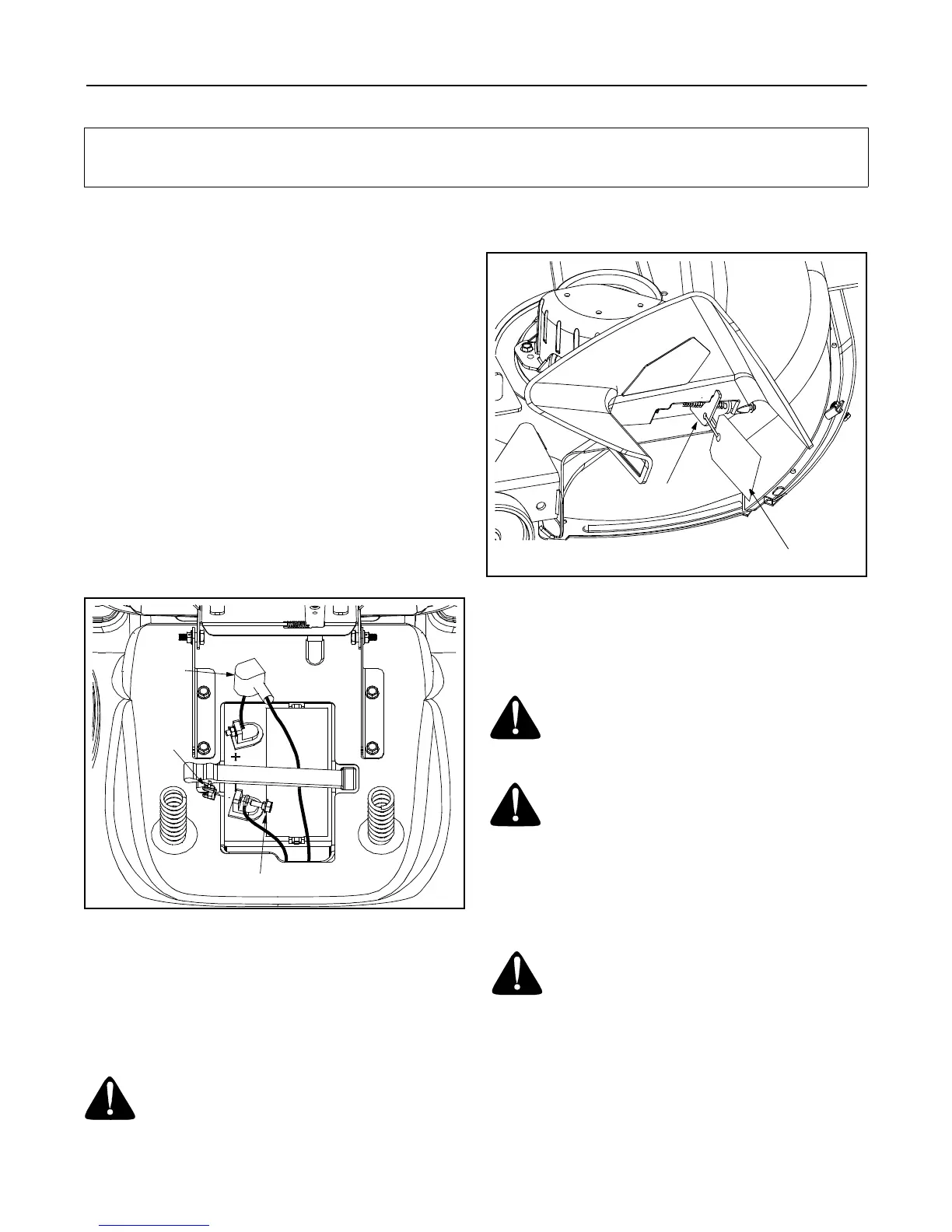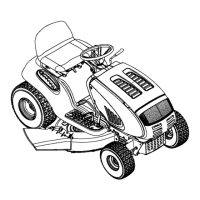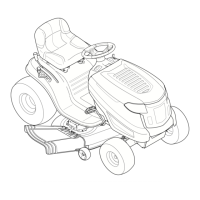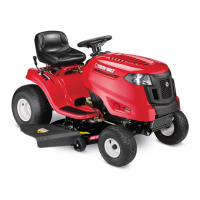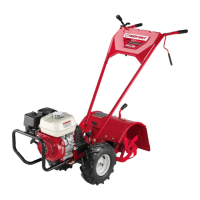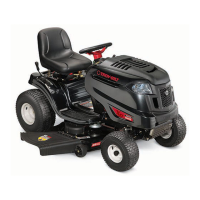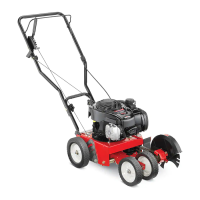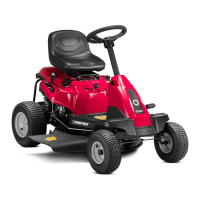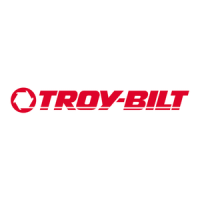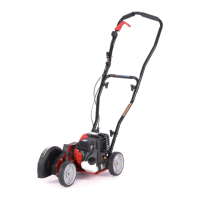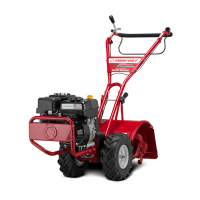8
SECTION 3: TRACTOR SET-UP
NOTE: Any reference in this manual to the RIGHT or
LEFT side of the tractor is observed from operator’s
position.
Attaching the Battery Cables
NOTE: The positive battery terminal is marked Pos. (+).
The negative battery terminal is marked Neg. (–).
• The positive cable (heavy red wire) is secured to
the positive battery terminal (+) with a carriage
screw and hex nut at the factory. Make certain that
the rubber boot covers the terminal to help protect it
from corrosion.
• Remove the shoulder bolt and wing nut from the
negative cable.
• Remove the black plastic cover, if present, from the
negative battery terminal and attach the negative
cable (heavy black wire) to the negative battery
terminal (–) with the bolt and the wing nut.
• Make certain the hold-down strap is in position over
the battery, securing it in place. See Figure 1.
Figure 1
NOTE: If the battery is put into service after the date
shown on top of battery, charge the battery as
instructed on page 20 of this manual prior to operating
the tractor.
Shipping Brace Removal
WARNING:
Make sure the riding mower’s
engine is off, remove the ignition key, and set
the parking brake before removing the
shipping brace
.
• Locate the shipping brace and warning tag found
on the right side of the mower, between the
discharge chute and the cutting deck. See Figure 2.
Figure 2
• While holding the discharge chute with your left
hand, remove the shipping brace with your right
hand by grasping it between your thumb and index
finger and rotating it clockwise.
WARNING:
The shipping brace, used for
packaging purposes only, must be removed
and discarded before operating your riding
mower.
WARNING:
The mowing deck is capable of
throwing objects. Failure to operate the riding
mower without the discharge cover in the
proper operating position could result in
serious personal injury and/or property
damage.
Tire Pressure
WARNING:
Maximum tire pressure under
any circumstances is 30 psi. Equal tire
pressure should be maintained at all times.
The tires on your unit may be over-inflated for shipping
purposes. Reduce the tire pressure before operating
the tractor. Recommended operating tire pressure is
approximately 10 p.s.i for the rear tires & 14 p.s.i. for
the front tires. Check sidewall of tire for maximum p.s.i.
IMPORTANT:
Your tractor is shipped with motor oil in the engine. However, you MUST check the oil level before
starting the engine and operating. Refer to the separate Briggs & Stratton Operator/Owner Manual packed with
your tractor. Read instructions carefully.
Shoulder Bolt
Wing
Nut
Rubber
Boot
Shipping Brace
Warning Tag

